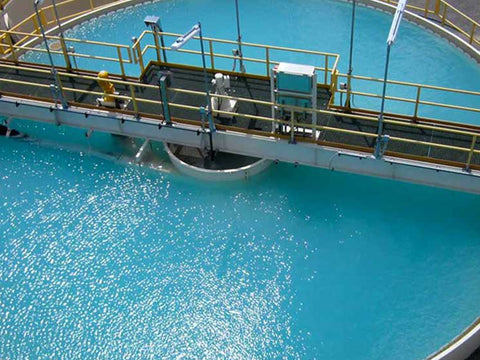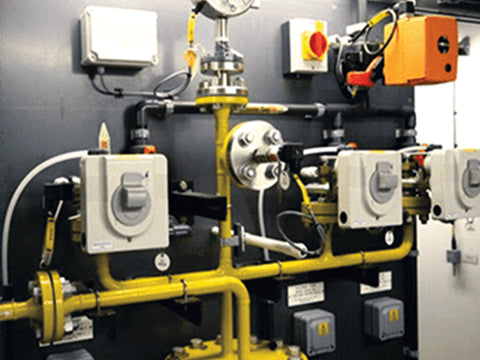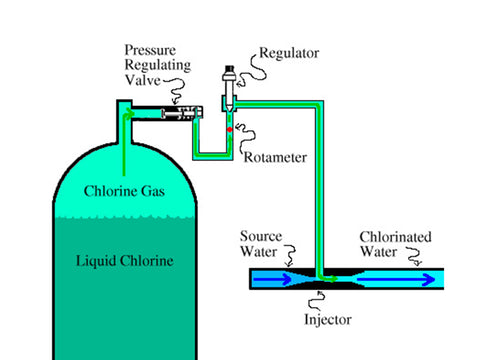Water Purification Through Chlorination
Chlorination is an important stage in water treatment, essential for disinfecting and purifying water from harmful microorganisms using chlorine. This process is vital in ensuring the water we consume every day is safe and free from contamination. The effectiveness of chlorination in eliminating bacteria, viruses, and other microorganisms makes it one of the most common and relied upon water treatment methods in the world.
Through the chlorination process, we can reduce the risk of waterborne diseases, such as cholera, dysentery, and typhoid, maintaining the quality of water for daily use. The importance of chlorination in water treatment is not only limited to the removal of harmful microorganisms but also includes its role in controlling algae growth, removing color, and reducing odor. Thus, chlorination becomes a critical step in maintaining public health and quality of life.

Why is chlorination important?
As one of the most effective and reliable water treatment methods, chlorination is responsible not only for eliminating harmful microorganisms that can potentially cause disease but also for providing a comprehensive solution to a variety of water quality challenges.
Let's take a deeper dive into why this process is key in maintaining drinking water quality and public health.
-
Removing Harmful Microorganisms
Chlorination effectively removes bacteria, viruses and protozoa that can cause disease. This process makes water safer for drinking, cooking, and other activities. In addition, chlorination plays an important role in reducing the presence of harmful substances such as heavy metals and organic chemical compounds that can accumulate in water sources.
This method also helps in controlling and reducing unwanted tastes and odors, which often stem from organic contamination or microbial activity in water.
-
Preventing Water Disease
By removing pathogens from water, chlorination plays an important role in preventing the spread of water-based diseases, such as cholera, dysentery and typhoid, which can pose serious health risks to communities. The process is also vital in blocking the spread of new diseases that may arise due to environmental changes or adaptation of microorganisms.
By ensuring water is free of harmful contaminants, chlorination supports public health efforts in expanding access to safe and clean drinking water, an essential contribution to improving quality of life and global health. This makes chlorination not only a preventive measure in water treatment but also an investment in public health and environmental sustainability.
How Does the Chlorination Process Work?
Through a series of well-coordinated stages, from the addition of chlorine to the disinfection reaction, chlorination makes the water we use every day safer and cleaner. Here is a detailed overview of how each step in the chlorination process contributes to the elimination of harmful microorganisms and keeps water quality at the highest standards.
-
Disinfection Reaction
The next step in the chlorination process is the disinfection reaction. Once chlorine is added to the water, it begins to react with existing microorganisms, destroying their cell walls or disabling vital functions necessary for survival and reproduction. This chemical reaction not only removes harmful microorganisms from the water but also produces by-products. Therefore, monitoring and management of disinfection by-products becomes a critical aspect of the chlorination process to ensure the resulting water is not only safe from microbes but also from harmful chemical compounds.
-
The Important Role of Chlorine
In addition to its direct effect on microorganisms, chlorine also plays an important role in maintaining water safety throughout the distribution system. By ensuring that residual chlorine remains in the system up to the point of use, this process effectively prevents the re-growth of harmful microorganisms that may occur in pipes or storage tanks. This is particularly important in areas with extensive or complex water distribution systems, where water must remain safe to drink from the source all the way to the user's tap.

Types of Chlorination Equipment
The use of the right equipment for the chlorination process determines the effectiveness and efficiency of disinfection. Various types of equipment have been developed to meet the diverse needs of different water treatment systems, ranging from simple to complex.
The use of appropriate equipment for chlorination processes greatly determines the effectiveness and efficiency of disinfection.
-
Chlorine Tablets
Chlorine tablets are one of the simplest and most effective methods for water disinfection, especially suitable for small to medium scale water treatment such as in communal facilities, schools, or housing units. Its easy use, simply adding the tablets to water, makes this method very practical for emergency situations or in areas that do not have access to more complex water treatment systems. Chlorine tablets are available in a variety of concentrations and sizes, allowing for dosage adjustments based on the volume of water that needs to be treated and the level of contamination present.
-
Automatic Chlorine Dosing System
For larger scale water treatment needs, such as in municipal drinking water treatment facilities, industries, or public swimming pools, automatic chlorine dosing systems are a more suitable choice. These systems are designed to automate the addition of chlorine to water with high accuracy and consistency.
Through careful control and constant monitoring, the automatic dosing system ensures that chlorination is performed efficiently, keeping the chlorine concentration at the optimal level for disinfection without exceeding safe limits. Features such as real-time monitoring, automatic dosing adjustments based on changes in water flow or water quality, and alarms for abnormal conditions, increase the reliability and safety of the chlorination process.
Choosing the right chlorination equipment largely depends on the scale of treatment, available resources, and the specific goals of the disinfection process. With technology constantly evolving, new options are constantly emerging to expand the capabilities and efficiency of the chlorination process in maintaining the safety and quality of the water we consume every day.

Chlorination is a vital step in water treatment that ensures the water we use daily is free from harmful microorganisms. Through the use of proper chlorination technology, this process can be performed more easily and effectively, providing clean and safe water for all our needs.
The importance of chlorination is not only limited to the destruction of pathogens and microorganisms, but also in maintaining water quality throughout the distribution system, keeping water safe for drinking, cooking, and other activities.
By understanding and implementing proper chlorination methods, we can significantly reduce the risk of water-related diseases and improve people's well-being and quality of life. This process, which is an integral part of water resources management, affirms our commitment to environmental health and hygiene, ensuring access to clean water as a basic right of every individual.

.png?width=50&height=50&name=Logo_Watermart_Perkasa-removebg-preview%20(1).png)


.webp?width=352&name=stenner-chlorinator-installation%20(1).webp)
